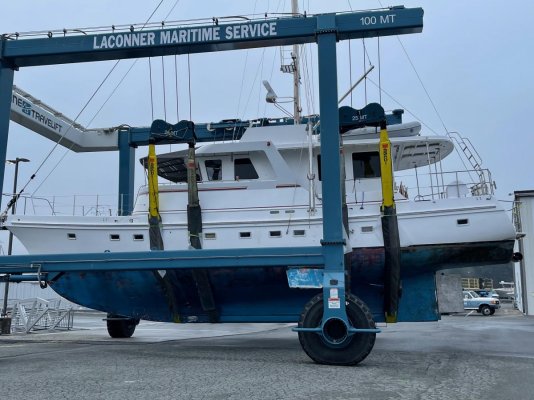ChristineKling
Veteran Member
Can you guys give me the names of any motor vessels built in the past similar to the LRC 58's priorities of efficiency low maintenance and safety?
As you have learned here, there really aren't very many vessels of this type that have been built as Dashew came the closest to any kind of production, and even he had very few takers. His later 70 and 78-footers went mostly to people who had owned earlier boats of his. Another boat that I have always admired is this one designed by Dave Gerr: https://gerrmarine.com/IMAGINE.html The profile looks different, but the principles were similar.
We have been living on MÖBIUS, also designed by Dennis Harjamaa of Artnautica, for about 9 months now, and though we have not done very much traveling, she is quite tender compared to the many different sailboats I've lived on. Granted at the moment, we are not anywhere close to fully loaded with fuel which will change things a bit. I have also been aboard BROADSWORD, LRC58 hull #2, as well as Dennis's own boat KOTI, and that design was similarly tender. Neither Wayne nor I get seasick, and we don't mind the motion, but that might be something for you to consider. These boats have been designed like the FPB's to be self righting. Regular trawlers are designed with a great deal of initial stability, therefore they resist rolling initially, but the cost is that when they reach a certain point, they will not return upright. To design a boat that will be self-righting, you give up some initial stability. Physics says you can't have both. Long narrow boats designed to be more efficient are going to roll more. We have chosen to go with passive stabilization in part because that gives us the gear to hang flopper stoppers while at anchor.
Good luck with your search.


